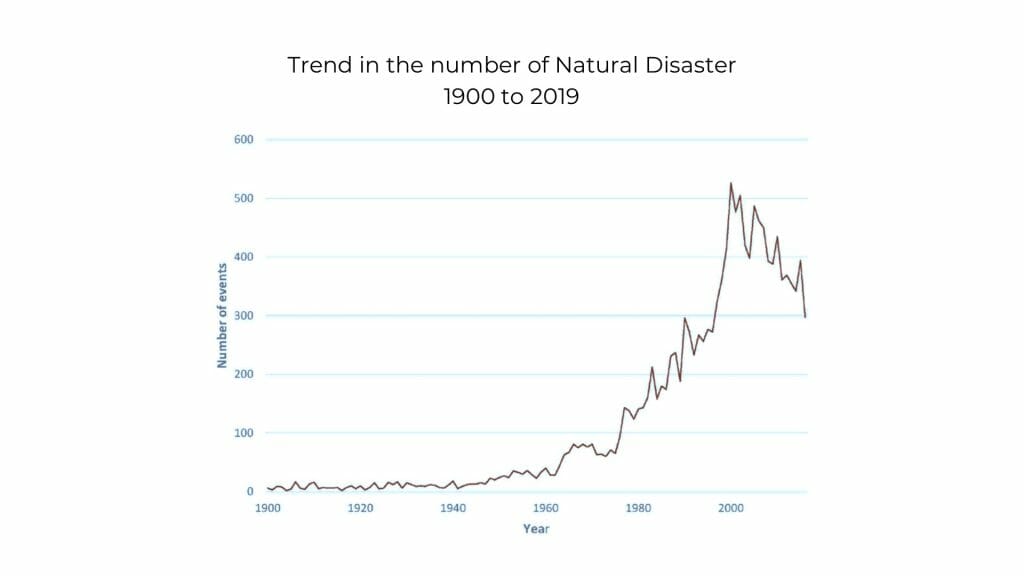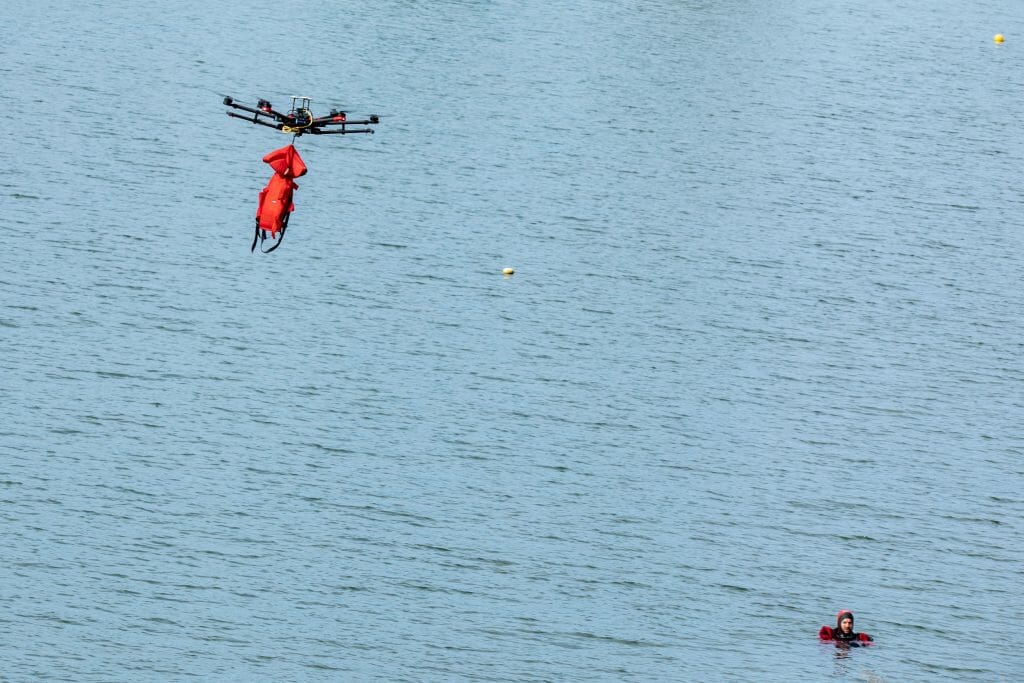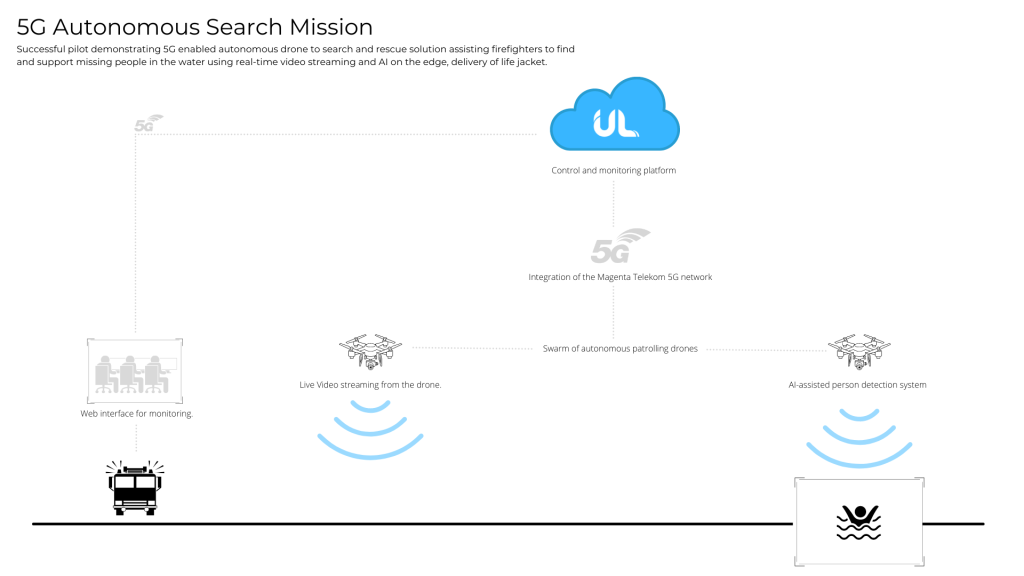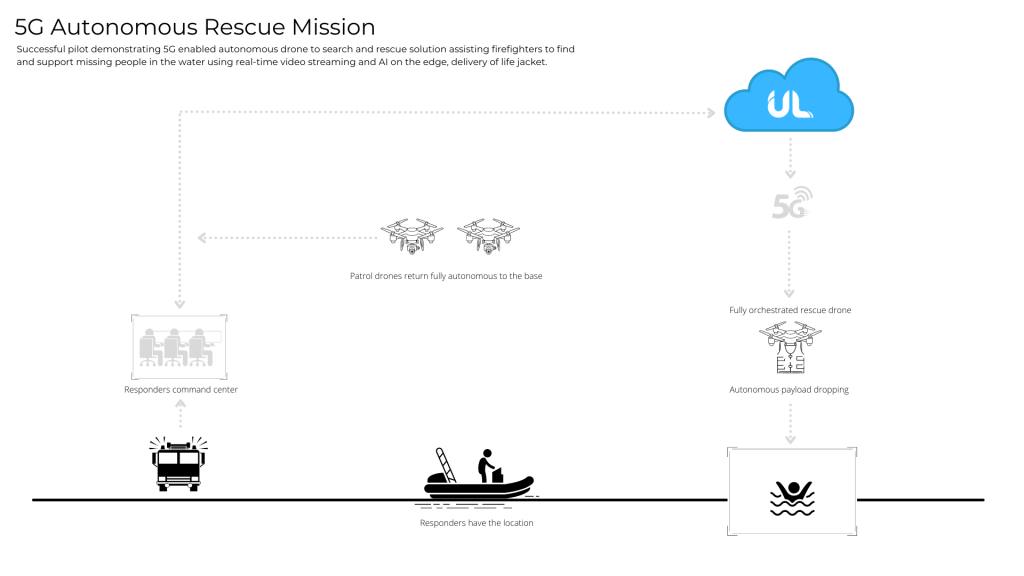GLOMO awards nomination in TECH4GOOD category
Deploying Autonomous Drone Search and Rescue to support in Emergencies and Humanitarian Crisis

Unmanned Life has been shortlisted in the MWC´s GLOMO award “Best Mobile Innovation supporting Emergency or Humanitarian Situations” category in recognition of its commitment to provide 5G enabled autonomous deployments for mission-critical Emergency Search and Rescue. With high risks of injury threats to the first responders, the manual ways of responding to Emergency search and rescue calls are expensive and inefficient. Unmanned Life addresses these identified challenges by offering an autonomous solution using drones, which can be deployed within a matter of minutes at lower cost, greater efficiency, and higher accuracy.
Emergency situations may include local occurrences such as accidents or fires or large regional calamities such as earthquakes or hurricanes. It is no secret that the number, and intensity, of natural disasters has been rising worldwide (Figure 1) and having the appropriate information to being able to communicate with emergency response teams can mean an effective emergency care within the “Golden Hour”.

Vienna Use Case
Unmanned Life partnered with Stadt Wien, Magenta Telekom, and Austro Control in the City of Vienna to demonstrate our Emergency Search and rescue product in a simulation at the river Danube. It showcased the benefits of autonomous deployments compared to the manual methods which causes many challenges like health risks to first responders, inflated cost, and low efficiency.

Live demonstration of Emergency Search and Rescue deployment by Unmanned Life in the City of Vienna.
Emergency Search mission
For our use case in the City of Vienna, we deployed a fleet of 5G enabled drones to survey the selected area modified by the first responders via our interface and assist them in searching for drowning people using our unique AI analytics algorithm for person detection.

Emergency Rescue mission
Once the drowning person was detected, the rescue drone carrying a payload autonomously took off to the signalled location and dropped a life jacket to the distressed individual, demonstrating an effective way of saving more lives.

How does our solution work?
Unmanned Life’s software platform is hardware agnostic, meaning drones from various vendors are connected to the platform. Small drones using high-definition cameras are used as scouting drones, and larger octo-copters carry payloads and communication devices used for rescue. Through the platform, the heterogenous drones are orchestrated to work as one, autonomous team.
At its fundamentals, responders select a required area via a map on the Unmanned Life Interface, taking under a minute to establish, which triggers the scouting drones to launch. Routes are autonomously calculated in real-time, reacting to the changing conditions in the environment. Our platform’s network interoperability means the drones are connected to the nearby network. For scalability, the platform can seamlessly switch between networks, whilst also being developed to be 5G-enabled for low-latency control and consistent streaming to responders.
AI-analytics runs on the edge to identify people or objects of interest in the video, while responders have access via the interface to follow in real-time. Once the victim has been identified, the rescue drone is autonomously launched, and drops the required payload to the victim, while enabling real-time communication between them and the responder.
The platform has been built to be extremely flexible and can be utilised in a variety of use-cases. Below, we outline a few of the vast use-cases that can benefit from our unique autonomous solution and its capabilities.
Drowning Prevention and Rescue
In a vertical where timing is everything, response can be optimised to use AI driven drone swarms to both search for, and rescue, a drowning individual. From lakes to oceans, Unmanned Life’s flexible autonomous drone fleet response can in a variety of environments for an efficient and scalable approach to saving lives.
- Payload Drop Time – UAV use is associated with up to 3x faster end-to-end rescue, including both finding the victim and providing a floatation device.
- Reduce Costs – Reducing a response team size by 70% frees valuable time for additional other cases.
- Consistent Deployments – Hour-long flights times from weather resistant drones means they are not a liability in response, a tool to compliment responders. Drones can fly at over 40mph for a fast emergency response.
Mountain Rescue
In England alone, there can easily be over 1,500 deployments a year, with callouts requiring emergency supplies to the individuals. The cost of each deployment, with or without a helicopter, is more than £2,500, which can quickly rack up to 5 figures depending on the complexity.
Autonomous Drone Swarms are an efficient way to respond in Mountain Rescue, searching for the individual, dropping life-saving payloads, and informing responders to the exact resource allocation needed for rescue.
- Faster Response – Within minutes, a drone swarm can gather insights into the level of resources need to rescue an individual.
- Protect Emergency Workers – With swarms of drones, active crew monitoring is possible from afar to ensure they are safe and heading in the right direction. Drone footage can further warn responders about dangerous or unreachable areas.
- Reduce Costs – An entire autonomous drone swarm can be deployed for 95% cheaper than a helicopter, all whilst having an increased coverage, flexibility, and fewer errors.
Wildfire Search and Rescue
Drones surveying wildfire spread can help gather situational awareness and enable pre-emptive and pro-active imaging to look for individuals in danger. Adding a payload element can provide life-saving resources and communication to those trapped. The whole solution, in conjunction with responders, can speed up the lengthy time it currently takes to mobilise a team for wildfire rescue.
- Resource Provision– Within minutes, a drone swarm can gather insights into the level of resources needed to save individuals in wildfires, and the rescue drone can provide these in a fraction of the current response time.
- Better Communication – Drones can provide communication methods to individuals, to ensure they get what they need in an emergency. Multiple responders have access to live feeds for cooperation.
- Consistent Deployments – Hour-long flights times from weather resistant drones means they are not a liability in response, a tool to compliment responders. Flying through 34mph winds at over 45 degrees Celsius is entirely possible with common commercial drones, enabling them to get close to individuals.
Benefits Of Our Software Platform

Too good to be true?
Unmanned Life is recognised for its cutting-edge technology and its autonomous Emergency Search and Rescue product is validated by big names like Magenta Telekom, Stadt Wien, and Austro control. In August 2021, we demonstrated our autonomous search and rescue product in the City of Vienna which consisted of a fleet of three autonomous drones equipped with multiple sensors and payloads. These autonomous drones were controlled and managed by Unmanned Life’s software platform hosted on an edge infrastructure that enabled their seamless orchestration. View the full video here: https://www.youtube.com/watch?v=28x77X4CSIs
The need for 5G
High speed connections allow the unique proposition of real-time, high quality data transfers. Within our drone orchestration for emergency search and rescue, we can feed real-time video over 5G to integrated business information systems using swarms of drones. The high-resolution imaging then registers into our AI, which makes decisions based on this information. Images combined with our live AI analytics suite enables detection of distressed individuals and data is shared through ultra-low latency event response signalling to the first responder and their team, whilst autonomously deploying the rescue drone. The consistency of 5G allows drones to react uninterrupted round-the-clock, allowing the first responders to react to emergency calls faster. The use of drones is not only cost-effective but given their low carbon imprint and energy consumption, is kind to the environment as well.
Technology and sustainability go hand in hand
Sustainable practices are vital for long-term visions of the environment and society, with technology leading the way in offsetting carbon emissions, keeping us safe, and helping those in need. Not only that but technology enables us to make smarter, faster, and more precise decisions which is better for the planet. As a disruptive software platform offering the orchestration of drones and robotics, we have a duty to accelerate these practices by using our drone platform for reforestation, public safety, and computer vision in wildfire mitigation, agriculture, and emergency response, whilst our autonomy with mobile robots tackles the increasing emissions from logistics and manufacturing. With the cooperation of local, national, and international governing bodies, we hope to scale these solutions to combat key challenges worldwide.
About Unmanned Life: Unmanned Life is changing the way robots are being deployed by providing seamless orchestration of autonomous robotics with its Autonomy-as-a-Service software platform. Unmanned Life integrates different technologies. Such as AI, 5G, and Edge computing with multiple robots, like drones and/or autonomous mobile robots (AMRs) and a variety of capabilities to enable autonomous robotics operations across multiple industries in particular, Industry 4.0 and Smart Cities.



